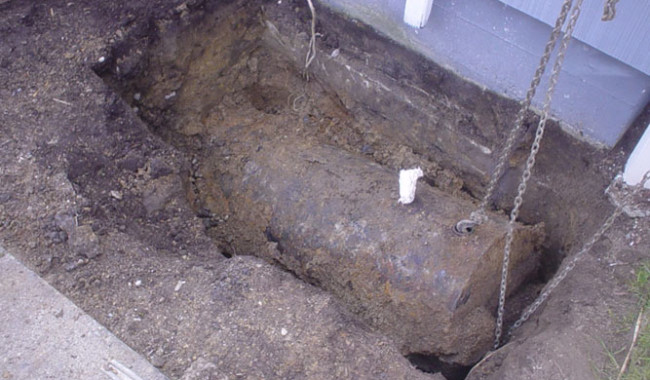Steel oil tanks are designed to perform safely for over a decade.
Unfortunately, oil tank safeguards are likely to fail after long periods of time underground.
Learn more about the impacts of nature on steel to decide if your home requires oil tank removal services:
Corrosion Factors
Steel is relatively immune to corrosion above ground, because the mixture of oxygen, moisture, and mineral salts is not present.
However, the situation changes once steel oil tanks have been left underground.
The introduction of soil and other environmental factors will hasten the corrosion of steel tanks.
The longer steel tanks are left underground, the more likely that these environmental factors will start the corrosion process.

Underground Environments
The properties of soil are extremely diverse, and mineral content can vary greatly from one area to the next.
The presence of underground moisture is also subject to regular change.
- The soil most likely to cause corrosion is the same soil that supports plant growth, as this soil captures and holds moisture after rainfall.
- With enough moisture, the non-soluble salts in soil begin to react with steel oil tanks.
- Eventually, this exposure leads to severe oil tank leaks.
Contamination Risks
Contamination is inevitable once natural forces have corroded steel tanks.
Once the leak has been initiated, all interactions with a forgotten oil tank are extremely destructive.
Surrounding soil can pollute nearby water supplies and animal habitats. The presence of exposed, flammable oil can create explosion risks.
These scenarios make hiring a state-certified oil tank removal team extremely important.